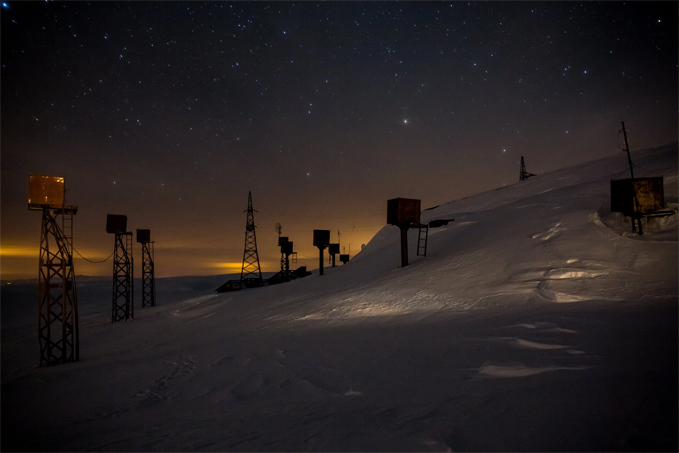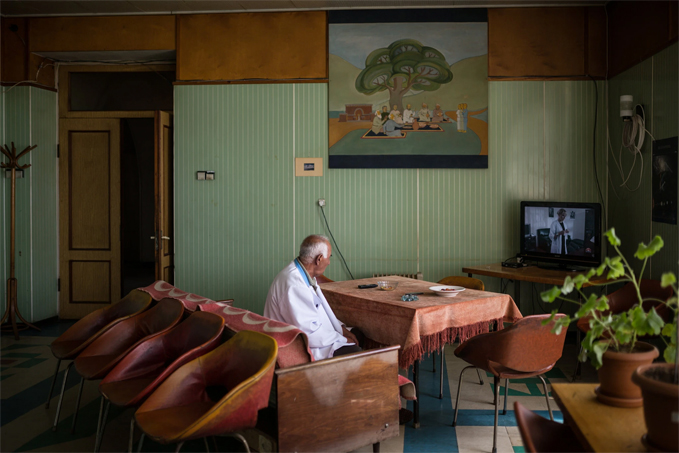
YSU PhD Students at Cosmic Ray Division awarded Kirakos Vaporciyan Sch
#1

Posted 24 December 2012 - 09:39 AM
YerPhI Cosmic Ray Division
2 Alikhanian brothers
375036 Yerevan, Armenia
Web: http://www.crdfriends.org/
Contact: Mari Gasparyan (CRD Public Relations)
Email: mgasparyan26@gmail.com
December 18, 2012
Cosmic Ray Division
Artem Alikhanyan National Laboratory
*Yerevan State University Students, Working on PhD Theses at the Cosmic
Ray Division of Artem Alikhanyan National Laboratory, Awarded Kirakos
Vaporciyan Scholarship.*
Hasmik Rostomyan and Hripsime Mkrtchyan, final-year PhD students at the
Cosmic Ray Division (CRD) of the Artem Alikhanyan National Laboratory
(formerly Yerevan Physics Institute), are the recipients of the Kirakos
Vaporciyan Scholarship for the 2012-2013 academic year. Their award was
granted on December 14, 2012
Kirakos Vaporciyan, the late husband of Mrs. Sandi Vaporciyan and the
brother of Mr. Harutyun Vaporciyan, strongly believed that supporting
education and world-class science in Armenia is of critical importance
to Armenia's future.He was an unwavering supporter of the Cosmic Ray
Division and made several personal pilgrimages to CRD's high-altitude
research stations on Mt. Aragats.His legacy includes the support of the
brightest students at the Cosmic Ray Division and a very important
project allowing the Cosmic Ray Division to analyze, display, and share
its state of the art research and data with the rest of the world's
scientific community. In his honor, CRD has named this project the
Vaporciyan Maltivariate Analysis and Visualization (VMAV) platform. When
this project is completed next year, it will break new ground in
web-based scientific "ecosystems".
Hasmig Rostomyan and Hripsime Mkrtchyan are currently two of the six
bright PhD students at the CRD.Hasmig and Hripsime are in their final
year of studies and are working hard on their experiments and data
analysis to write their PhD theses by the summer of 2013. As is the
tradition at the Cosmic Ray Division, their theses defense will be
attended and judged by top cosmic ray scientists from around the
world.Naturally, they are taking their work very seriously and aim to
impress the judges and make proud their advisor, Prof. Ashot
Chilingarian, and the Vaporciyan family.
Hasmik, Hripsime, and Prof. Chilingarian are grateful to the Vaporciyan
family for diligently carrying out the wishes of Mr. Kirakos Vaporciyan
and for their own generous support of the CRD and its students year
after year, and also to the Armenian General Benevolent Union for
managing the Kirakos Vaporciyan Scholarship fund for CRD's students.
Mr. Kirakos Vaporciyan was a member of the greater Detroit Armenian
community and the Armenian Engineers and Scientists of America --
Michigan Section.
#2

Posted 22 January 2020 - 09:05 AM

PanARMENIAN.Net - The Aragats Cosmic Ray Research Station in Armenia—a once bustling center of physics, devoted to the study of cosmic rays—is the focus of a fresh article by The New York Times.
Cosmic rays are high-energy particles thrown from exploding stars, black holes and other astrophysical calamities thousands or millions of light-years away and whistling down from space.
“The buildings and the instruments at Aragats remain, like ghost ships in the cosmic rain, maintained for long stretches of time by a skeleton crew of two technicians and a cook. They still wait for news that could change the universe: a quantum bullet more powerful than humans can produce, or weirder than their tentative laws can explain; trouble blowing in from the sun,” the article says.

The Aragats Cosmic Ray Research Station, a branch of the A.I. Alikhanyan National Science Laboratory in Yerevan, was established in 1943, when Armenia was part of the Soviet Union. In its heyday, more than 100 scientists worked there keeping track of the hard rain from space.

Now sometimes only three people work there, keeping steady watch on machines that watch the universe. But, surprisingly, science has survived and thrived there. In recent years the station’s work has focused on solar physics and the high-speed protons thrown from the surface of the sun — space weather, in short. The lab has also investigated radiation that hits Earth’s surface from thunderstorms. As a result the lab, despite losing most of its funds and work force, has increased its production of publications and conference reports tenfold in the past two decades, Dr. Ashot Chilingaryan, director of the A.I. Alikhanyan National Science Laboratory and head of its Cosmic Ray Division said. His scientists delivered five papers at a recent geophysics meeting in San Francisco.
http://www.panarmeni...k_Times_article
#3

Posted 22 January 2021 - 09:24 AM
The Center of Cosmology and Astrophysics of the Alikhanyan National Science Laboratory (Yerevan Physics Institute) has sent a white paper to the American Artemis program, the center’s head, Professor Vahagn Gyurzadyan told a press conference at Armenpress press center.
With the Artemis program, NASA will land the first woman and next man on the Moon by 2024, using innovative technologies to explore more of the lunar surface than ever before.
The program collaborates with commercial and international partners to establish sustainable exploration by the end of the decade. It will then use what they learn on and around the Moon to take the next giant leap – sending astronauts to Mars.
Armenian research institute bids for participation in NASA’s Artemis human lunar lander program – Public Radio of Armenia
“They made a call for proposals, and mostly American and European companies were the ones to respond. We also submitted a project,” Gyurzadyan said, adding that the proposal is currently being considered in Houston.
The Professor said the technologies developed at the Alikhanyan National Science Laboratory (Yerevan Physics Institute) are applicable in a number of spheres including space research, medicine, military industry, etc.
https://en.armradio....lander-program/
0 user(s) are reading this topic
0 members, 0 guests, 0 anonymous users












